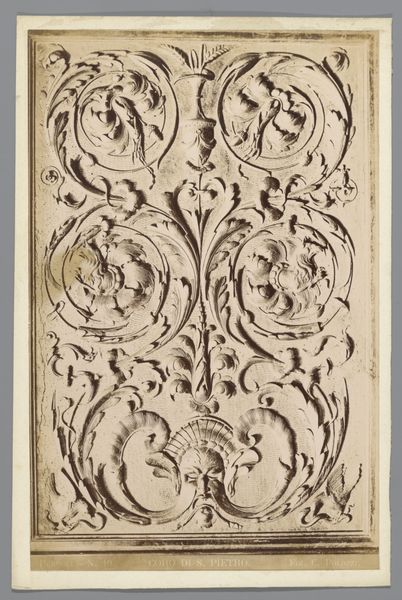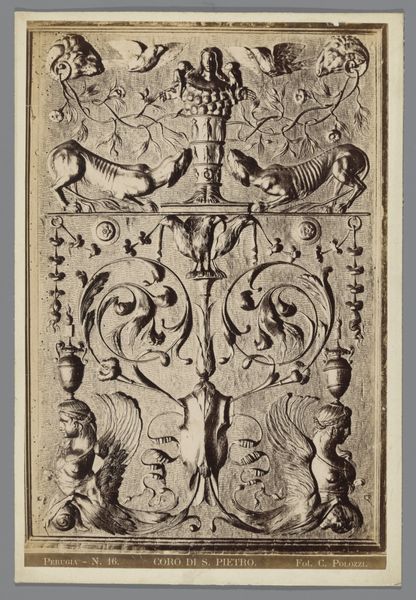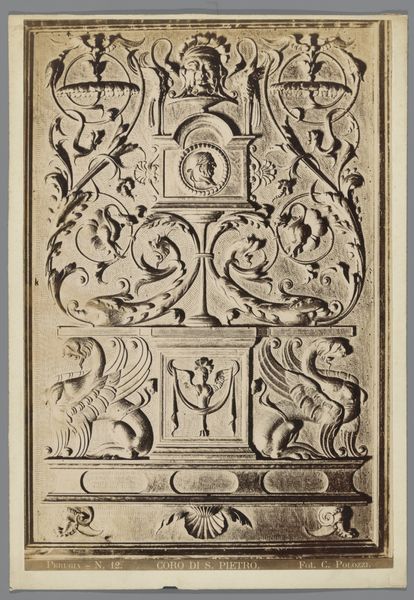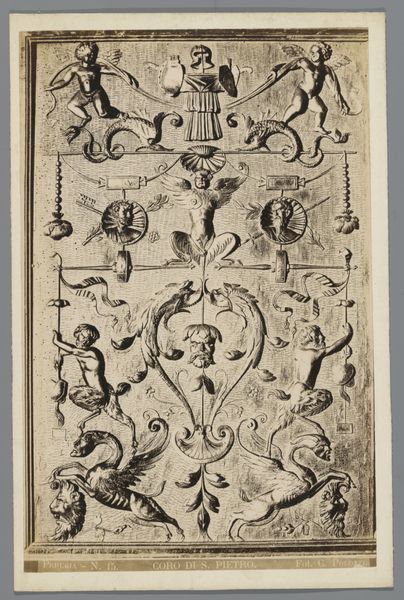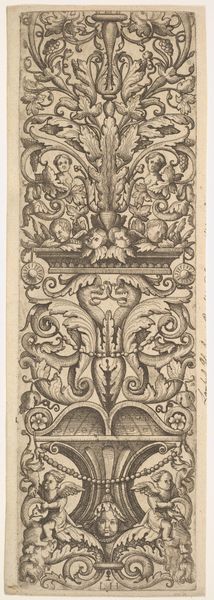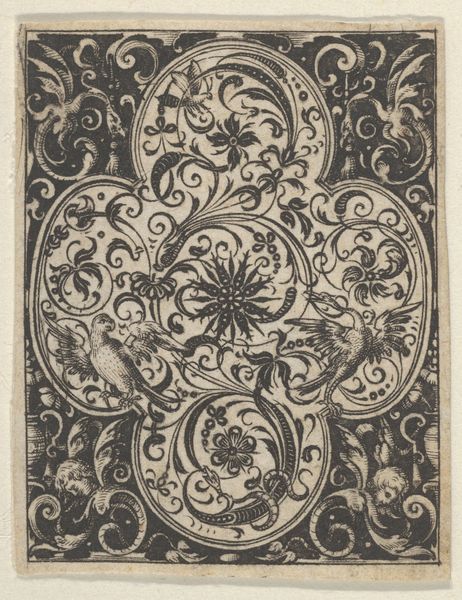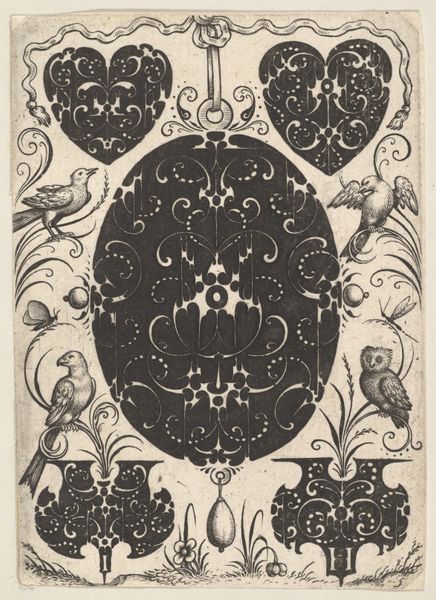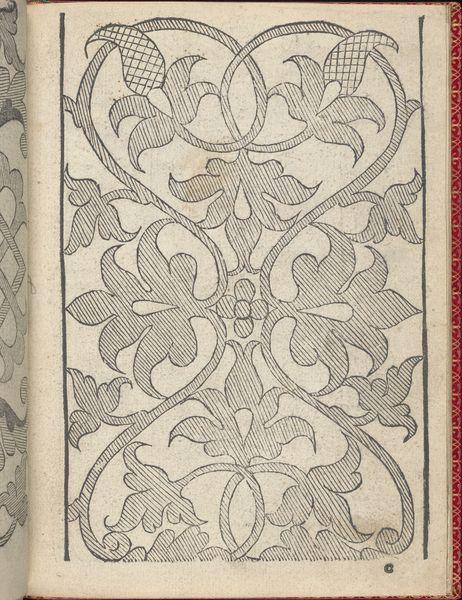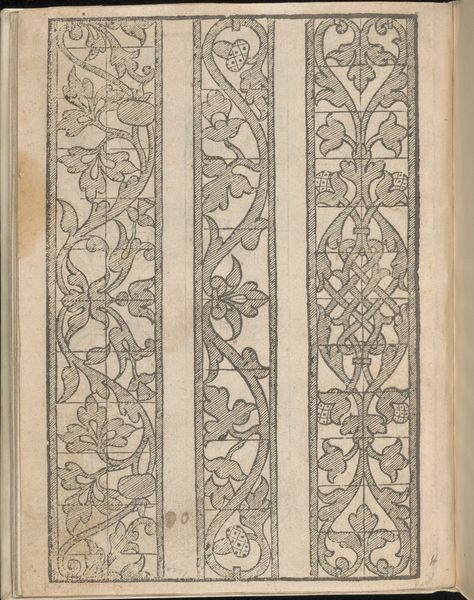
drawing, print, relief, paper, engraving
#
drawing
# print
#
relief
#
paper
#
11_renaissance
#
geometric
#
engraving
Dimensions: height 260 mm, width 171 mm, height 273 mm, width 184 mm
Copyright: Rijks Museum: Open Domain
Curator: This is an engraving of a relief within the San Pietro in Perugia, dating from the late 19th century and signed by C. Polozzi. The image itself is monochrome and printed on paper. Editor: Immediately, I see a careful symmetry, a rigid formalism with a strong sense of the fantastic, with the mythical beasts acting as supports and guardians. It’s so meticulous. Curator: Right, that rigidity speaks volumes about the value placed on the work and labour itself. Notice how the print medium democratises what would have originally been quite an inaccessible, exclusive ornamentation. Through reproduction, it can be widely disseminated and perhaps used for inspiration in less palatial projects, so its social impact multiplies. Editor: It definitely hints at its symbolic importance, though, from that central vase sprouting vegetal life, flanked by those incredible griffins. They suggest power and vigilance. Even the small birds look to that central form. Are they messengers? They have an allegorical weight about them. Curator: Allegorical weight certainly, but also material consideration. What type of paper was used, for instance, or the acid employed to create the relief in the original structure. These things speak to the means available at that specific moment in history. Also the commercial market for this sort of print reproduction—the intended audience, and its consumption. Editor: Absolutely, and thinking about that audience, those classical motifs, that repeating geometric pattern, creates a rhythm that surely reflects the visual language they already understood and celebrated. There is nothing jarring, visually; everything refers back to a shared symbolic reservoir, power, life, guardianship. Curator: I wonder about the relationship between the printmaker Polozzi and the original artisans as well. This printed artifact stands as a record, preserving the craft of one moment through a new set of skills and materials from another. I want to delve into Polozzi’s intent in capturing it; to study their craft too. Editor: It makes me want to actually visit San Pietro and stand before the original and ask: what did these forms mean to those who lived their lives daily in its shadow? It feels as if, despite time, culture still echoes through those repeated motifs. Curator: It has been truly rewarding viewing this artwork. It shows me that studying any form of art is an investigation into the labor that creates culture as well as records of the moment, from start to its circulation. Editor: I agree completely. It is an exercise in symbolic decoding; an enduring connection to shared ideas and human history that the original craftsmen embedded into this space for future audiences to ponder upon.
Comments
No comments
Be the first to comment and join the conversation on the ultimate creative platform.
